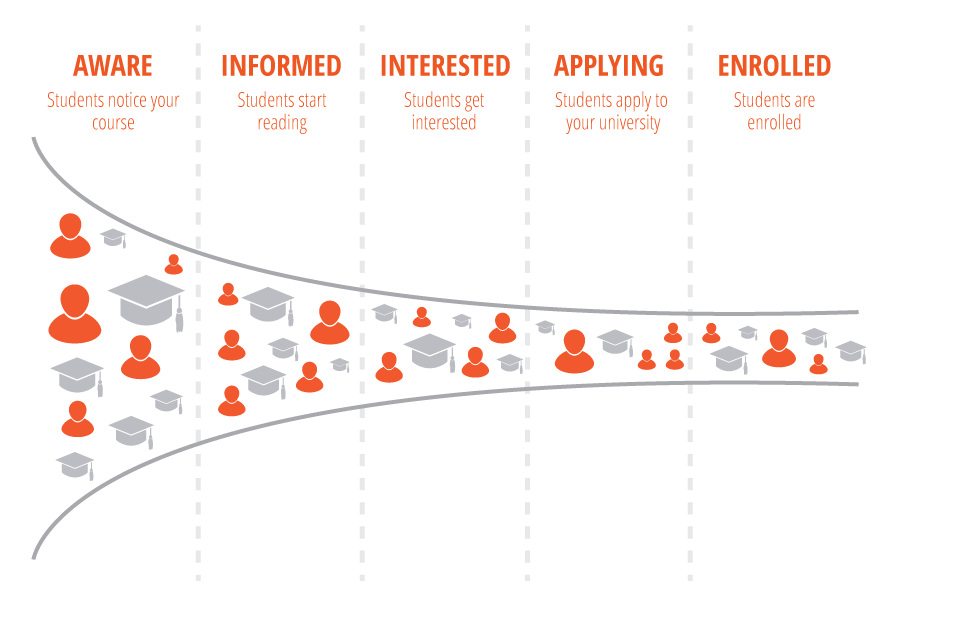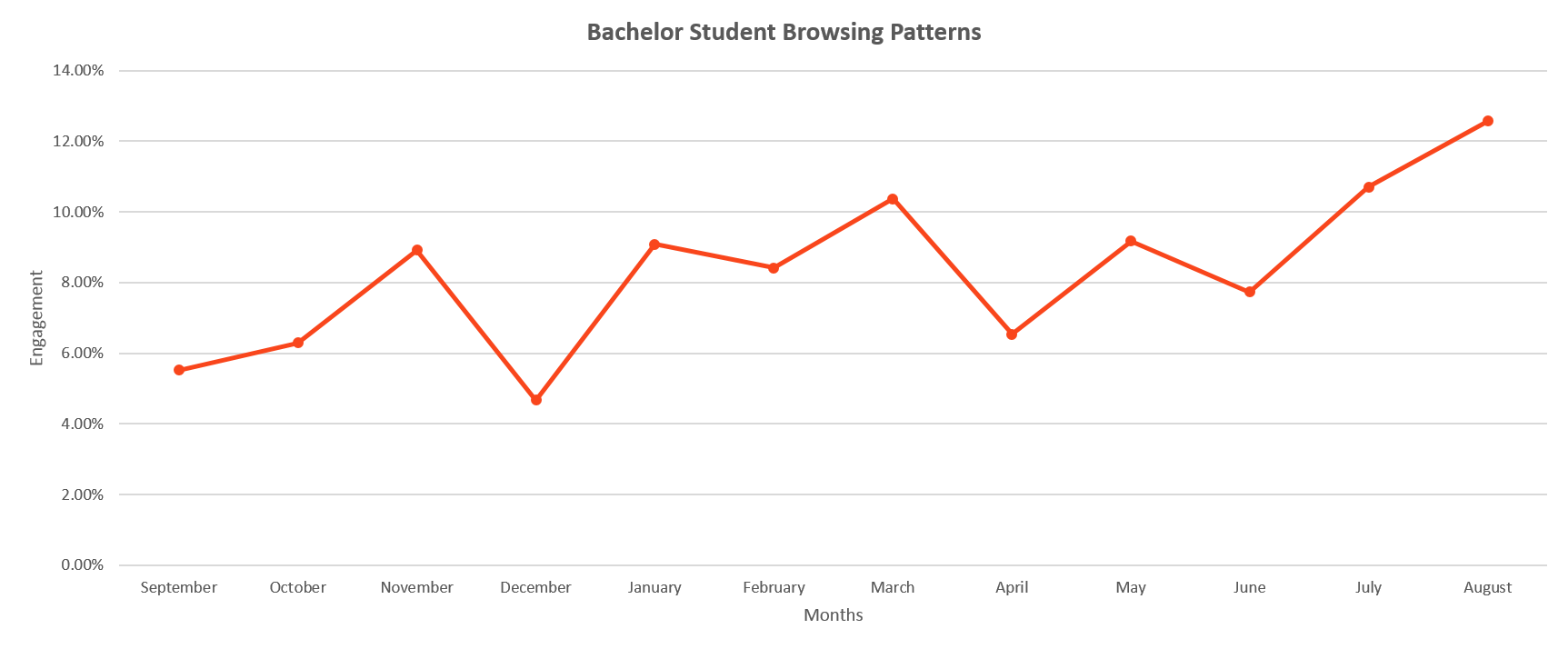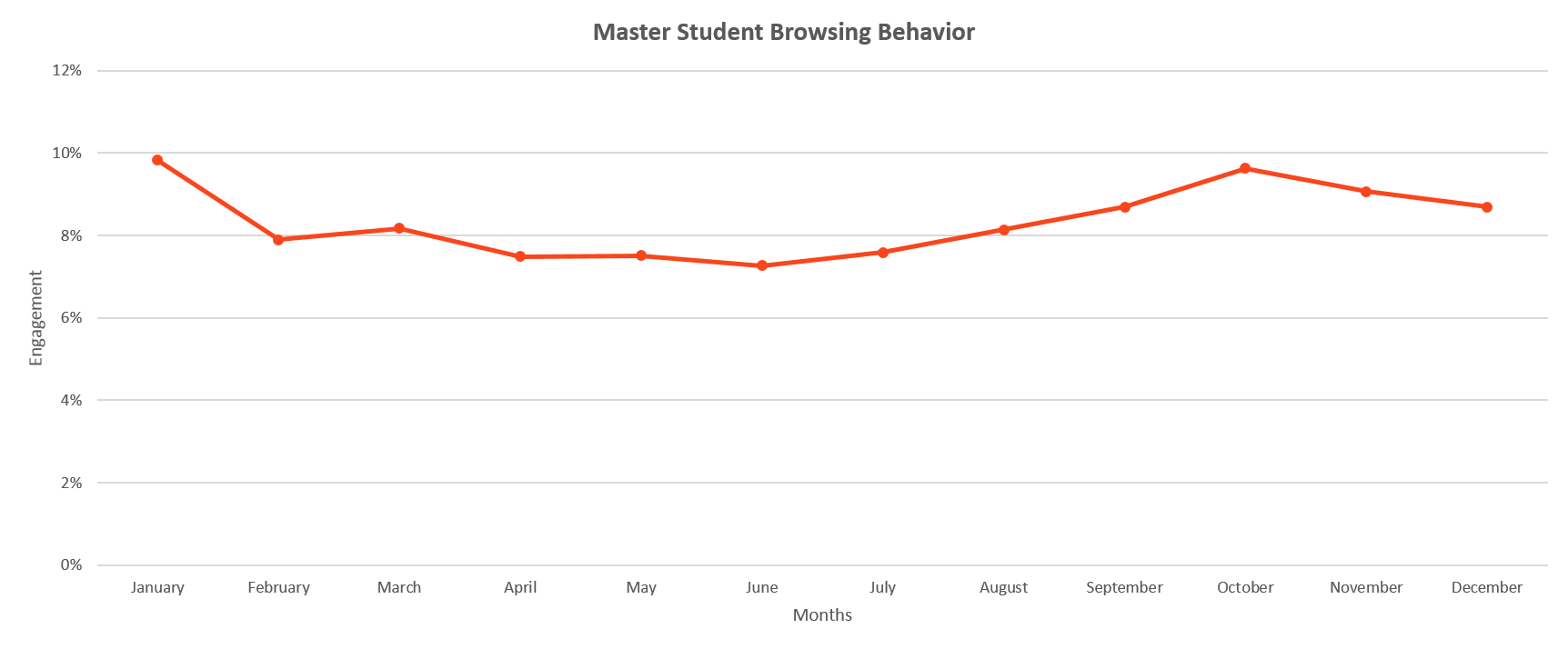Browsing patterns of American students wanting to study abroad
The number of American students looking to study abroad is on the rise, and we have some great news for them. The number of English-taught programmes around the world has been constantly growing, with the top 1,000 universities offering over 72,500 English-taught study options covering over 200 disciplines and sub-disciplines.
The study choice funnel
For anyone looking to study abroad, finding a study programme can be quite a difficult and lengthy process. Typically it takes the shape of a funnel as students move through the study choice process. Students deciding to study abroad must first become aware of the possibility to study abroad, which is one of the missions of Generation Study Abroad in the USA.
Students for whom studying abroad is an appealing option can then start gathering information about their options, reading about the study destination options, different programme types, university types and admission criteria. Next, prospective students are bound to show interest in a few of their personal favourites, at which point they will request more in-depth information, contact the university to ask questions about the admission process and visit their website to learn more about life on campus, and of course apply and if they are accepted enrol at the university of their choice.

If you want to encourage universities to apply to your university, you can actively support students in the study search process during every stage of the funnel. The first stage your institute can have a direct impact is the INFORMATION stage, where students are actively seeking for information about study destinations, disciplines, study programmes and universities.
Browsing patterns
According to our latest insights, after analysing the browsing patterns of almost 1 million American students, we know that browsing behaviour for Bachelor or undergraduate studies follows some seasonal patterns, with the most information being read in November, January, March, July and August. At the Master or graduate level, we know that American students are predominantely gathering information consistently throughout the year, with strong peaks around the months of January, September and October.
Of course, there is a time lag between when students are gathering information, and when they get in touch with universities, which we address in more detail in our whitepaper on International Student Study Search Patterns, which also gives you a more detailed geographical and degree level breakdown of when students get in touch with universities, at the INTERESTED stage.


Additional resources

[contact-form-7 id=”3278″ title=”Search Whitepaper download”]
To download the full whitepaper about international students’ study choice patterns, please fill in the form, and learn about:
- The study choice process
- Tips for how to optimize your marketing and recruitment budget
- The seasonal patterns for spring and autumn semesters
- The patterns for students looking for a bachelor, master of Ph.D. degree
- The geographical patterns for students around the world looking for a new study degree.
For more updates, follow us!





